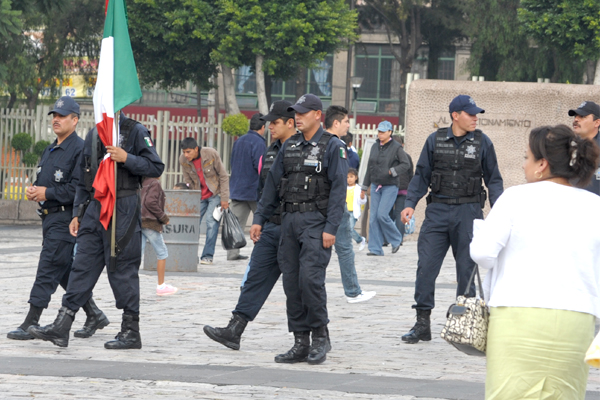
Today’s reality on the streets of Mexico City --
Fear has proven to be far more powerful and contagious than swine flu, or any flu. Or soccer mania. News stories about swine flu have scared both Mexicans and Americans into changing their daily habits while keeping tourists away from Mexico’s popular destinations. With all the drama of a cheap telenovela, newspaper and television reports around the world made swine flu in Mexico a top story earlier
this year and Mexico’s tourism industry is now trying to recover.The Mexican government is spending a lot of money to restore Mexico’s brand as a travel destination. It’s a smart investment as foreign tourism earned Mexico $13.3 billion last year. Tourism employs more than two million people and accounts for about 8 percent of the economy. Though it is impossible to calculate an exact amount, Mexican officials say that the revenue from foreign tourists could fall $5 billion this year.
While it is a real health issue, swine flu, or H1N1, never became the deadly crisis that news media, health experts, and government tried to sell to the public. It’s a crisis that they are still trying to sell to people, especially here in the U.S.
Another unfortunate result of the obsession with swine flu is that is has taken attention away from a much larger threat in Mexico; crime. Fear of crime has also been exploited by news media, which makes it difficult for people to know the real risks or how they should alter their activities. Mexico City is my home city and I know that violent crime is a constant reality there, but what is the reality on the streets there today?
As part of the government’s campaign to bring tourists back to Mexico, Visión Hispana Newspaper and other media were invited to Mexico City earlier this month to attend a news conference and tour the city. In this issue, Visión Hispana contributing writers Rigoberto Gálvez and Robert Gronke write about their experience in Mexico and whether flu, crime, or simply fear stole their freedom to enjoy one of the great cities of the world.
Read the article by Robert Gronke: Risk vs. reward: A tourist's experience in Mexico City http://www.visionhispanausa.com/index.php?option=com_content&view=article&id=339:risk-vs-reward&catid=18:noticias-internacionales
Lea el artículo de Rigoberto Gálvez: Momento épico en Teotihuacán http://www.visionhispanausa.com/index.php?option=com_content&view=article&id=344:momento-epico-en-teotihuacan&catid=6:cultura-local&Itemid=5

